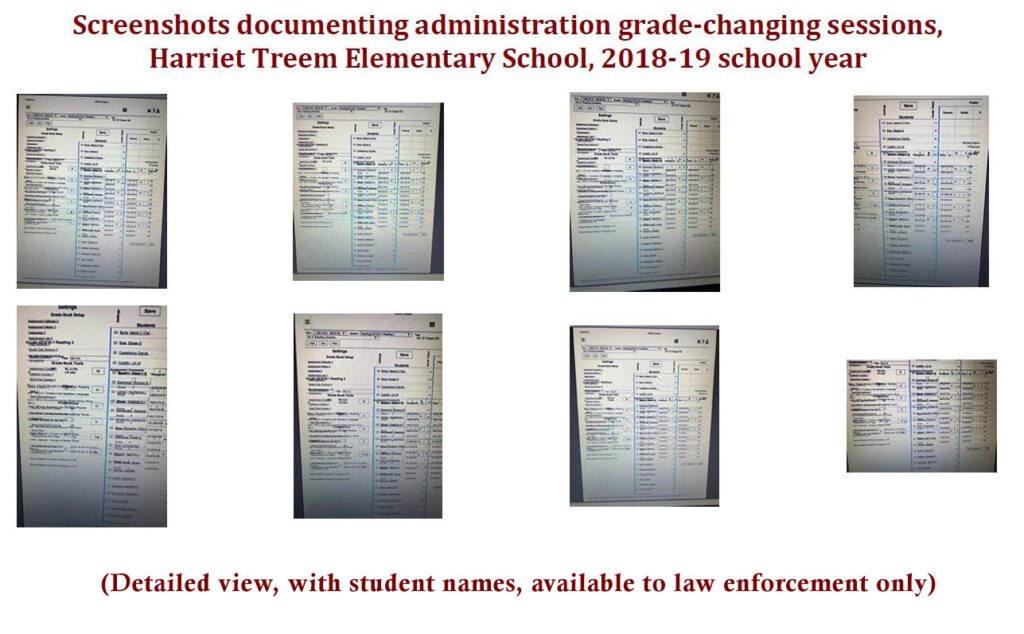On several occasions during the years he’d worked as a day-to-day substitute teacher at CCSD, James Oliver had seen evidence of the sort of cheating this report details.
Until it was explained to him, however, he hadn’t understood what he was seeing.
“It would just be lying there, right on top of the printer machines, there in the teachers’ lounge,” he told Nevada Journal.
“Once, when I was on a one-day sub assignment, I had found it, and I asked a passing teacher about it. I said, ‘Do you know what this is? I’ve seen this a couple of times in some other schools where I’ve substituted. I don’t know if it’s a problem with the printers or what. I’m trying to print something, and this comes out and I don’t know if it’s the same printer that you all are using or what.’”
As Oliver recalls it, this older teacher’s response had been sharp and quick.
“Is that yours, sir?” she snapped.
He’d answered, “No, I’m just trying to find out what it is. I don’t know if it’s an error here.”
To which she’d responded, “No, you got to put that up. If you get caught with that, you’ll lose your license. Somebody around here is changing grades.”
Then she’d walked on out the teacher lounge door.
At the time, James was substituting for a third-grade teacher. So he next consulted the school’s third-grade chairperson.
Looking at the printout, she said, “Oh, my God,” and — showing it to another teacher with her — said, “Look what he found.”
She then asked James where he’d found it.
“It’s right on the printer machine,” he said, adding: “I’ve seen it at two other schools.”
James recalls that the chair and her companion sort of giggled, then said, “Yeah, you better get rid of that. Somebody here is cheating on grades. That happens all the time here.”
So James threw the printout into the garbage can.
The paper printouts he kept finding, says James, looked very like IMG_3100.jpg, a graphic shown in Part 8 of this report. Additional similar screenshots from Treem ES end this part of Nevada Journal’s report.
It was at a different school, before coming to Treem, he says, that he “found out what this really was, and how they did the cheating.
“A guy who taught computers there explained it to me. First, he seemed a little scared and asked me to close the door so he wouldn’t get caught telling me what he was about to explain.”
Like the older teacher at the earlier school, the tech said the paper printouts were evidence that someone was changing grades. And the only reason he understood the process, he added, was that it had been explained to him by a teacher.
Embedded in the Infinite Campus grade-book software used by the school district, the tech told James, is a capability or application that uses layers and facilitates the mass changing of grades. It’s been in place for at least 10 years, the tech believed.
He also explained that the grade cheating is not done through the paper printouts that end up atop the teacher-lounge printers. It’s done inside the Infinite Campus grade-book software that the district — like other districts all over the country — pays to use.
And the reason the paper printouts get spit out by the district’s printers — the tech said his teacher had explained — was because whoever was doing the wholesale changing of grades didn’t fully understand the software he or she was using, and so hadn’t erased or deleted the ganged-up layers atop the grade-book template.
When James asked, “Why are they changing grades?” in the first place, he was told it was because the kids’ grades were so low.
According to James, the tech explained that the grade-changers “hope that they can fill in the gaps [in learning] later, where they can [hopefully] show [the kids] actually came up to that grade.”
That’s a rationale that has been present in cheating scandals all across America. Later, James would also hear it advanced at Treem Elementary.
How it’s done
At the start of each school year, when teachers open Infinite Campus, they see the grade book with all their students’ names and the slots where grades are to be entered. As the year proceeds, however, if the grades already entered appear likely to make the teachers or administrators look bad, a new, blank version of the page can be created by copying the original template and deleting any previously inserted grades.
The same can be done with digital pages showing poor test data that would otherwise roll up into the gradebook and the kids’ progress reports and report cards. “Alternative” versions of individual test reports, with better grades than the students actually earned, can thus be created.
Then, through digital overlays carefully stacked up atop grade-book pages, reports and report cards with those faked grades can be created, making it appear to parents and higher-ups — including possibly complicit or inattentive administrators — that the teacher, the students, and the school itself are all doing exceptionally well, academically.

